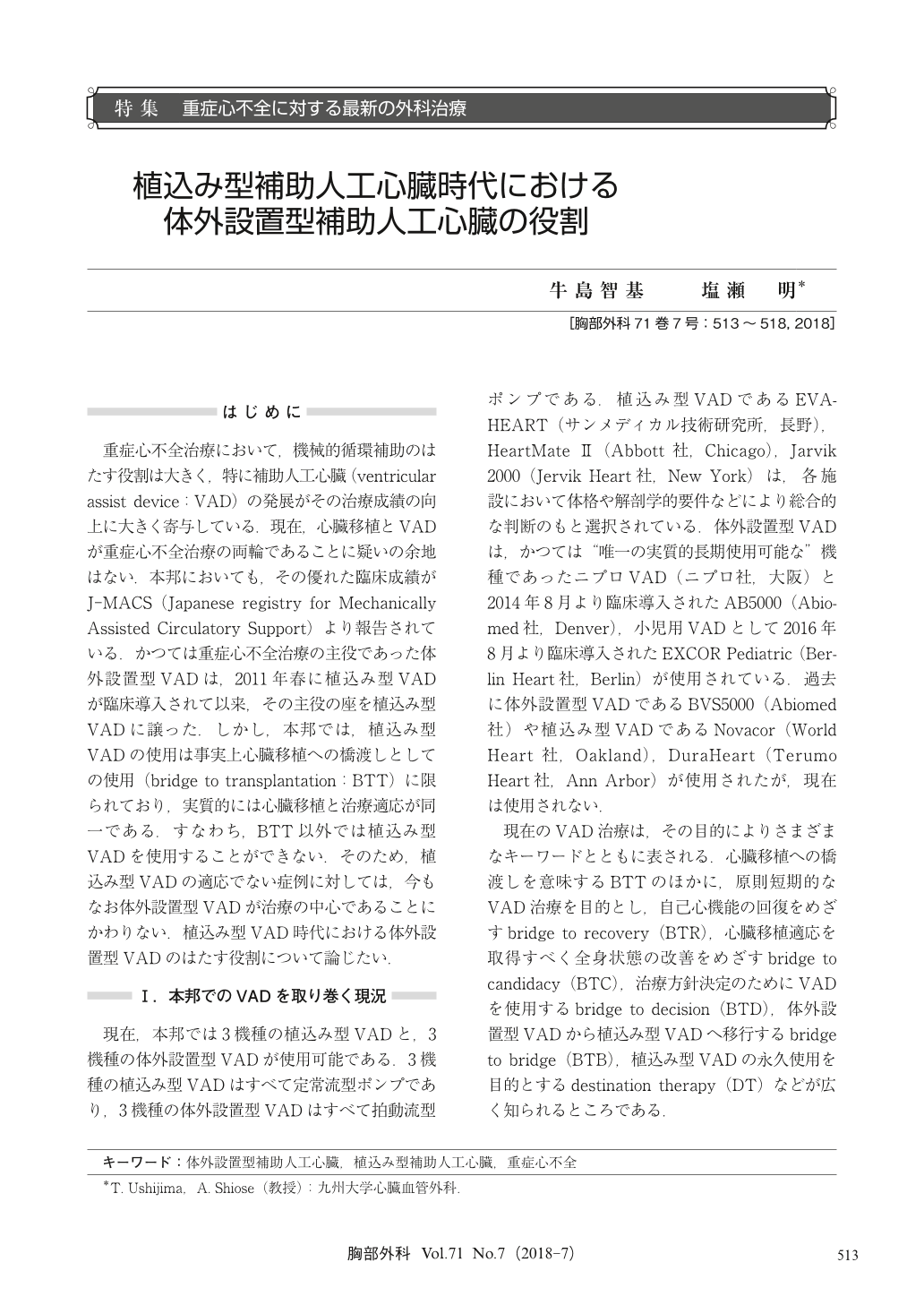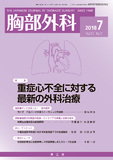Japanese
English
- 有料閲覧
- Abstract 文献概要
- 1ページ目 Look Inside
- 参考文献 Reference
- サイト内被引用 Cited by
重症心不全治療において,機械的循環補助のはたす役割は大きく,特に補助人工心臓(ventricular assist device:VAD)の発展がその治療成績の向上に大きく寄与している.現在,心臓移植とVADが重症心不全治療の両輪であることに疑いの余地はない.本邦においても,その優れた臨床成績がJ-MACS(Japanese registry for Mechanically Assisted Circulatory Support)より報告されている.かつては重症心不全治療の主役であった体外設置型VADは,2011年春に植込み型VADが臨床導入されて以来,その主役の座を植込み型VADに譲った.しかし,本邦では,植込み型VADの使用は事実上心臓移植への橋渡しとしての使用(bridge to transplantation:BTT)に限られており,実質的には心臓移植と治療適応が同一である.すなわち,BTT以外では植込み型VADを使用することができない.そのため,植込み型VADの適応でない症例に対しては,今もなお体外設置型VADが治療の中心であることにかわりない.植込み型VAD時代における体外設置型VADのはたす役割について論じたい.
In the era of implantable ventricular assist device (VAD), the role of extracorporeal VAD is changing. The extracorporeal VAD was ever the mainstream of treatment for severe heart failure. Now, it is mainly applied to patients with severe cardiogenic shock. Recently the centrifugal pump available for cardiopulmonary bypass system has been often used as the extracorporeal VAD because of its simplicity of management. Although the implantable VAD plays the pivotal role for bridge to transplantation since its clinical introduction in 2011, the extracorporeal VAD still has the important role for end-stage heart failure and cardiogenic shock.
We have experienced 47 cases of the extracorporeal VAD until now. Here, based on our experience, we describe the “past and present” role of the extracorporeal VAD and mention the future aspect of the extracorporeal VAD.

© Nankodo Co., Ltd., 2018


